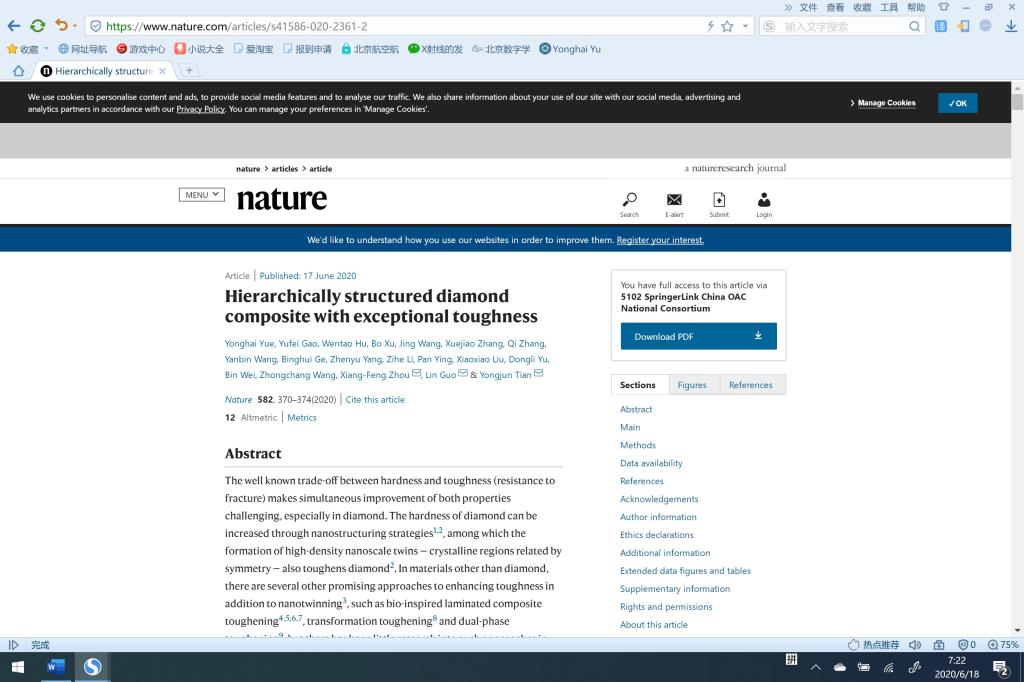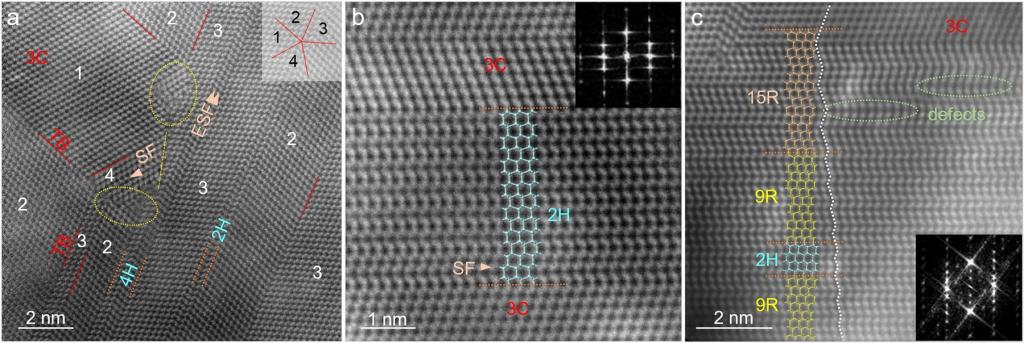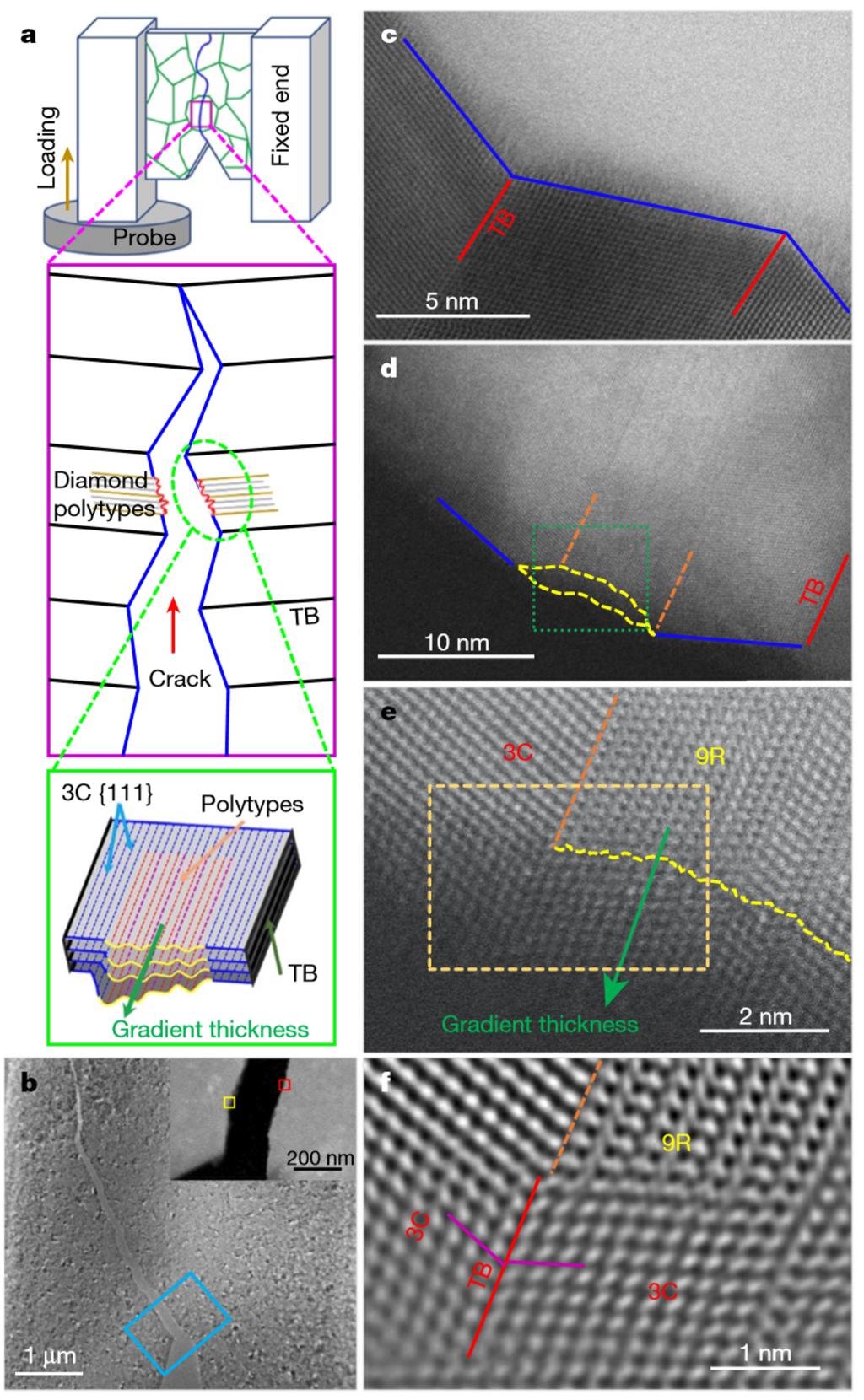On June 18, an article entitled “Hierarchically structured diamond composite with exceptional toughness” was published in Nature, reporting the latest findings on the toughening mechanism in nanotwinned diamond (nt-diamond). The research was conducted by the team of Professors Guo Lin and Yue Yonghai from the School of Chemistry of Beihang University and the team of Academician Tian Yongjun from Yanshan University. Professor Yue Yonghai, Ph.D student Gao Yufei and Professors Hu Wentao and Xu Bo are first authors. Professors Zhou Xiangfeng and Guo Lin and Academician Tian Yongjun are corresponding authors.

Diamond is essential for a wide range of industrial and scientific applications. Although its hardness is unparalleled, its toughness is inferior to that of many known tool materials. Increasing its hardness still further usually results in lower toughness, shortening the lifetime of diamond tools. Improving toughness and hardness simultaneously is challenging because of the intrinsic brittleness of diamond. Nanotwins have been proven to effectively improve the hardness of diamond (Nature, 2014, 510, 250), and the introduction of non-3C phase diamond polytypes (such as 2H, 4H, 9R, 15R, etc.) with the change of preparation conditions is expected to further improve its toughness. Having a command of its toughening mechanism at the atomic scale is conducive to the design of new superhard and supertough diamond, and will play a positive role in the development of superhard materials and engineering ceramics with better properties.

Fig. 1 HAADF-STEM images of nt-diamond composite synthesized at 15 GPa and 2,000 °C
Considering that, the team of Professors Guo Lin and Yue Yonghai and the team of Academician Tian Yongjun collaborated to research the toughening mechanism in nt-diamond through in-situ experimental mechanics of nanomaterials at the atomic scale before fully understanding the non-3C polytypes. They have proposed a new idea of diamond toughening, which solves the scientific problem that diamond materials cannot be both superhard and supertough.
The researchers systematically studied the fracture behavior of thent-diamondby using the established scanning electron microscope in-situ mechanical testing equipment and the in-situ single-cut beam bending experiment method. The fracture toughness measured was up to 26.6 MPa m1/2, which was more than five times that of the synthetic diamond material (Fig. 2). In order to further reveal the origin of high fracture toughness, the crack propagation mechanism of nanotwinned composite diamond materials was studied by a spherical-aberration-corrected scanning transmission electron microscope. It is found that in the high-density twin region, the crack expands along {111} plane and changes its direction rapidly at the twin boundary, forming a zigzag path. When the crack meets the non-cubic polytype structure, the {111} plane is no longer continuous, and the crack propagation path becomes curved and undulating. When the crack passes through the non-3C phase diamond polytype structure, the non-3C phase diamond will change into 3C phase diamond (Fig. 3). The synergistic effect of the above aspects greatly dissipates energy, which significantly improves the fracture toughness of the material.

Fig. 2 Snapshots from in situ bending test and summarized mechanical performance of typical engineering materials

Fig. 3 In situ bending test of nt-diamond composite in TEM
The work was supported by the National Key R&D Program of China, the National Natural Science Foundation of China, the National Science Foundation for Distinguished Young Scholars, Advanced Innovation Center for Biomedical Engineering of Beihang University, Beihang Excellent Talent Cultivation Program, etc.
More information of this article:
https://www.nature.com/articles/s41586-020-2361-2
Reported by Wei Qian
Reviewed by Li Hongjie
Edited by Jia Aiping
Translated by Feng Yueyue

